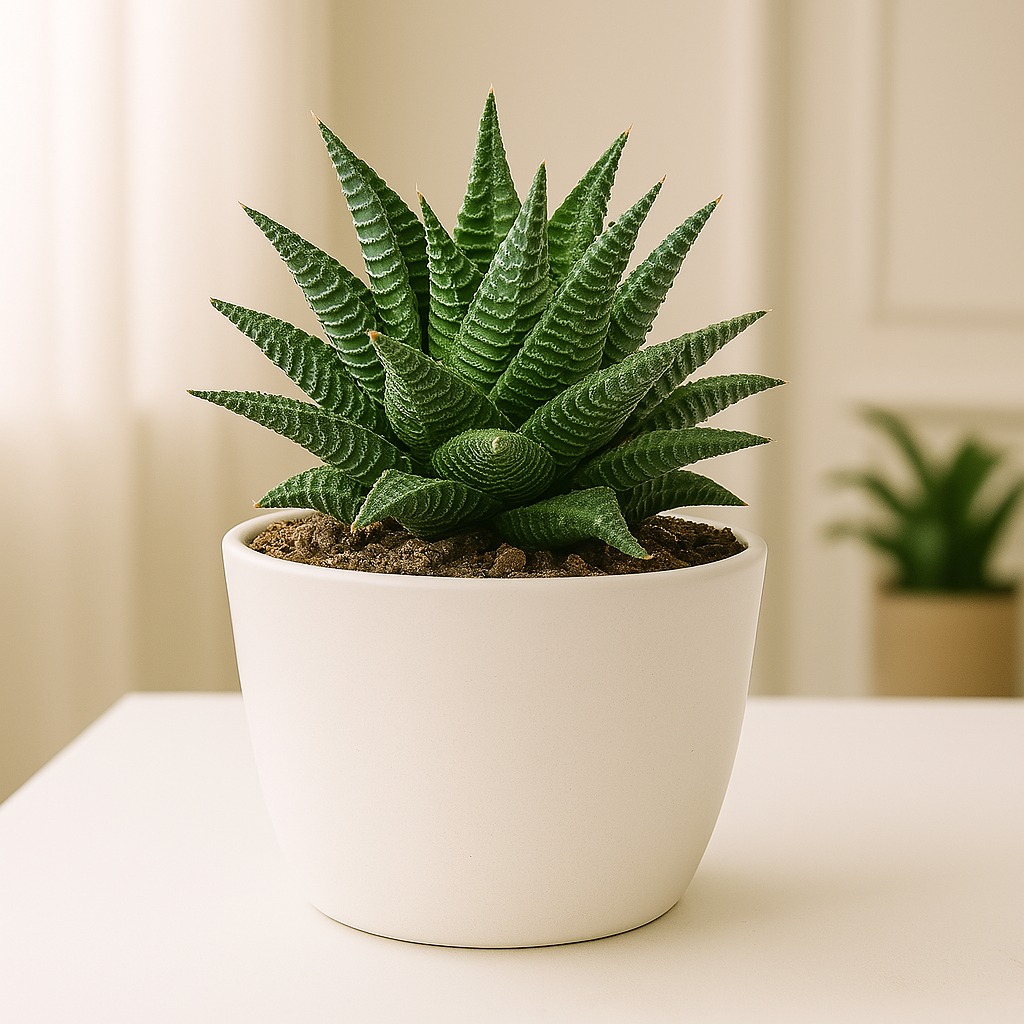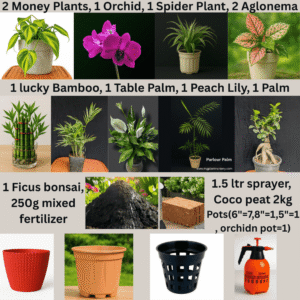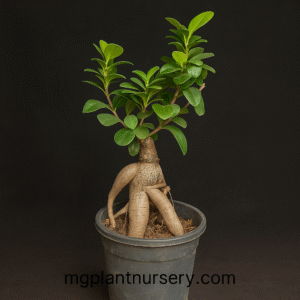Haworthia Limifolia: A Unique and Resilient Succulent
Description
Haworthia limifolia is a striking and resilient succulent known for its beautifully patterned, spiraling leaves that resemble the texture of a shell. This fascinating plant belongs to the Asphodelaceae family and is native to South Africa, thriving in rocky landscapes and arid conditions. Its name, “limifolia,” comes from the Latin words lima (file) and folium (leaf), referring to the finely ridged texture of its leaves, which resemble the surface of a file.
The plant has a compact and symmetrical rosette growth pattern, making it a highly desirable addition to indoor plant collections. Its deep green leaves are adorned with ridges running along their length, creating a visually captivating appearance. The plant’s surface often has a slightly glossy or matte sheen, depending on environmental conditions, further enhancing its aesthetic appeal.
Unlike larger, more demanding succulents, Haworthia limifolia remains small, typically growing to about 3 to 4 inches in height and spreading outwards gradually. Because of its manageable size and slow growth rate, it is perfect for indoor settings, where it can be placed in decorative pots, including premium white ceramic planters, to accentuate its elegance.
During its flowering season, Haworthia limifolia produces slender stalks with delicate, white tubular flowers. While the flowers are not the primary attraction, they add charm and indicate a healthy growing environment.
Care Guide for Haworthia Limifolia
Proper care ensures that Haworthia limifolia thrives and maintains its beauty. Fortunately, this succulent is low-maintenance and highly adaptable, making it suitable for both novice and experienced plant enthusiasts.
1. Light Requirements
Haworthia limifolia prefers bright, indirect light, making it ideal for indoor environments. While it can tolerate some direct sunlight, excessive exposure can cause its leaves to develop a reddish hue or dry out.
- Ideal Placement: Near a bright window with filtered light, such as an east or north-facing window, where sunlight is not too intense.
- Artificial Lighting: If natural light is insufficient, grow lights can be used to supplement its lighting needs.
2. Watering Schedule
Succulents like Haworthia limifolia do not require frequent watering due to their ability to store moisture in their thick leaves. Overwatering can lead to root rot, so a cautious approach is recommended.
- Watering Frequency: Water every 2–3 weeks in warm seasons and reduce watering in colder months.
- Soil Dryness Test: Ensure the top 1–2 inches of soil are dry before watering again.
- Drainage: Use pots with drainage holes to prevent excess water retention.
3. Soil Composition
Well-draining soil is essential for preventing root rot. A mix formulated for succulents and cacti works best.
- Ideal Mix: A blend of cactus soil, sand, and perlite for optimal aeration.
- Organic Additions: Small amounts of coconut coir or peat moss can be added for moisture regulation.
4. Temperature and Humidity
Haworthia limifolia thrives in moderate indoor temperatures between 15°C and 25°C (59°F–77°F). While it can tolerate brief temperature fluctuations, avoid prolonged exposure to extreme cold or excessive heat.
- Humidity Needs: Prefers dry to moderate humidity. Avoid high humidity settings that encourage fungal growth.
- Winter Care: If temperatures drop below 10°C (50°F), consider moving the plant away from cold drafts and reducing watering.
5. Pot Selection
Selecting an appropriate pot enhances the plant’s aesthetic appeal and supports healthy growth.
- Material Choice: White ceramic pots complement the plant’s deep green tones, creating a premium and elegant display.
- Drainage Necessity: Always choose pots with drainage holes to prevent excess moisture retention.
6. Fertilization
Haworthia limifolia has minimal fertilization needs but benefits from occasional feeding during its active growing season.
- Type: A diluted succulent fertilizer or a balanced liquid fertilizer applied every two months during spring and summer.
- Avoid Over-Fertilization: Too much fertilizer can cause unnatural growth and weaken the plant.
7. Propagation Methods
Expanding your collection of Haworthia limifolia is easy through propagation. The plant naturally produces offsets (small baby plants) that can be separated and replanted.
- Steps for Propagation:
- Gently remove offsets from the base of the parent plant.
- Allow offsets to dry for a day before planting in dry, well-draining soil.
- Water lightly after 3–5 days to encourage root establishment.
8. Common Issues and Solutions
While Haworthia limifolia is resilient, minor issues can arise:
- Overwatering: Leads to mushy leaves and root rot. Adjust watering frequency accordingly.
- Sunburn: Leaves develop a reddish tint under excessive sunlight exposure. Move to indirect light.
- Pest Infestation: Rare but may attract mealybugs. Treat with neem oil or insecticidal soap.
Conclusion
Haworthia limifolia is more than just an ornamental succulent—it’s a symbol of resilience, natural beauty, and easy maintenance. Its structured, ridged leaves and compact form make it a perfect addition to any indoor setting. Whether placed in a well-lit living room, an office desk, or a nature-inspired product display, its refined presence creates a calming and stylish touch.
buy other indoor plants.







Reviews
There are no reviews yet.